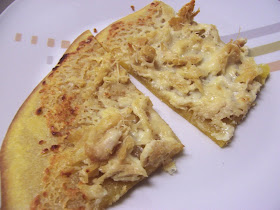At first I didn't quite know what to make. Then, walking either in or out of the library on Wednesday morning, I thought "Cake Pops!" I called my mom that night and explained what I was talking about. I got a rather tepid response even after explaining them, but rest assured. For quite some time now, they've been all the rage on the internet.

Since even stress bakers realize that time allowances must be made for things like final papers in your major seminar, I made these babies in the do a step - homework - do a step fashion. Turns out, cake pops lend themselves to process baking, as you need to let cakes cool, let cake balls chill, let chocolate solidify... They are perfectly conducive to the last week and a half of classes.
My musically-inclined friend's recital went really well. She played a handful of really great pieces, including one written specifically for her by her former horn teacher. That piece, which concluded the concert, ended rather spectacularly. Let's just say someone left the church doors open and, turns out, squirrels are curious about French horn sounds.
Several people at the after-recital reception, upon having a cake pop or two, told me I should skip library school and think about something culinary, maybe have a bakery. Flattering, yes, but as you all know, I am all too happy to give away my secrets (or not-so-secrets) that no sort of cooking career would be viable for me. And besides, with library school under my belt, I can be that girl who can answer the really random questions who will always bring something to a dinner party. Not a bad type of girl to be.

Cake Pops
inspired by the Pioneer Woman, Bakerella, and Confections of a Foodie Bride
a 13" x 9" cake of your choice
a can of frosting, your choice (or an equivalent amount of homemade frosting)
melting chocolate
wax paper
sucker sticks
Bake the cake and let it cool completely, preferably overnight. Crumble the cake into a large bowl and stir in almost the entire can of frosting. This process might take a little while, but make sure the cake and frosting are completely mixed. Take spoonfuls of the cake mixture and roll them into balls, placing them on a wax-papered baking sheet when you're finished. Place the cake balls in the refrigerator for a few hours until they are sufficiently chilled and firm.
Melt your melting chocolate carefully. Sticking each cake ball with a sucker stick, dip them into the chocolate, being careful to let the excess chocolate drip back into the bowl before sticking the cake pops top-end-up to dry. (A block of styrofoam would, I'm sure, be great for this. If you have any.)
Note: If the sticks fall out, use a spoon to coat the cake ball in chocolate anyway. Ta da! Now you have a cake truffle!

































